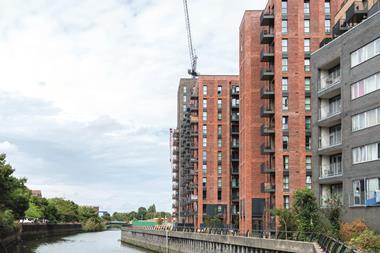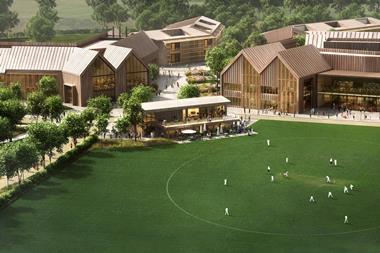Much has been written about the life sciences sector and environmental, social and governance (ESG) over the past couple of years, but how do they intersect and how are developers of real estate for the life sciences sector navigating the ongoing challenge of ESG?

ESG is widespread across the real estate sector, which increasingly includes life sciences development. As early as the bid stage, ESG forms part of the selection criteria, with landowners requiring an in-depth understanding of how a developer will deal with ESG on site.
In an industry that is growing rapidly, but where there is a lack of experience in how to design and build specialist research and development space, this poses a unique challenge – one that developers must address to secure the best tenants for their developments.
This is true both in terms of developers’ own ESG targets and corporate reporting, but also in the offer they make to their desired occupiers, who are also increasingly likely to have set their own ESG targets and net zero commitments.
In addition, the war for talent is a particular issue in the life sciences sector. Highly educated, socially mobile individuals have a choice of employer, and the ESG position of a prospective employer is becoming ever more important. Being able to offer a best-in-class building that offers the full range of ‘E’, ‘S’ and ‘G’ benefits is critical, with surveys showing this is a hot topic at the recruitment stage.

Life sciences real estate poses unique challenges for developers seeking to build in a sustainable manner. These buildings require higher floor-to-ceiling heights, stronger floor-loading capability and larger capacity for utilities when compared with an office building, as well as chemical storage and hazardous waste provision. This makes identifying suitable spaces more challenging and also makes retrofitting existing space potentially unworkable, which means that life sciences developers are often starting with new build and a large amount of embodied carbon.
Key choices
Choice of materials and construction techniques is key, together with sustainable building features such as heat pumps, photovoltaic panels, water storage and reuse facilities and automated lighting. These ‘E’ measures sit alongside the ‘S’ of better natural light, occupier wellbeing and community building.
Developers are increasingly looking to obtain a certification of their building to demonstrate these construction-side green credentials. Such buildings will also require an Energy Performance Certificate (EPC) and developers will have their eye on the likely lifting of standards by 2030, whereby only buildings with an EPC rating of ‘B’ or above will be capable of being let.
But the ESG challenge does not end once the building has been constructed and let. Increasingly, developer-landlords – in handing over a certified, sustainable building – expect their tenants to occupy it in a sustainable manner. Green lease clauses are now the norm and there is a concerted move away from looser ‘co-operation and discussion’ to more stringent requirements on tenants. This includes fulfilling obligations to keep EPC ratings at a certain level, requirements around waste and recycling (which are challenging in a lab environment) and mandatory sharing of information on energy consumption (which in the life sciences industry can be sensitive information).
Landlords and tenants must seek to share the expense – and ultimately reap the rewards – of building and maintaining sustainable spaces. As more evidence comes to light that the buildings not adhering to green standards will face a ‘brown discount’ on their value, developers and their occupiers will be motivated to take the best space available.
Louise Ward is partner at law firm Charles Russell Speechlys






























No comments yet